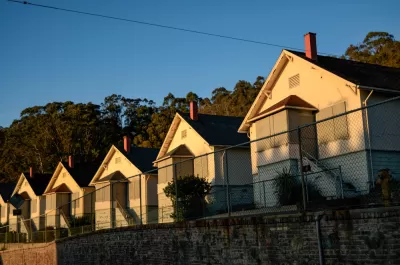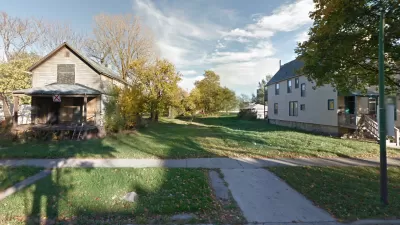A proposed tax credit designed to stabilize single-family neighborhoods facing growing numbers of vacancies is making its way through Congress.

Kristin Siglin reports "recent actions in both the House and the Senate that show some real momentum behind the Neighborhood Homes Investment Act (NHIA)," in an article for Shelterforce magazine.
As discussed in Planetizen coverage from July 2020, the NHIA would create a tax credit "to spur investment in modest single-family homes in distressed neighborhoods," as explained by Siglin here.
According to Siglin, the bipartisan coalition behind the bill is motivated by a "lack of suitable housing supply and the problem of neighborhoods plagued by substandard housing and vacancy."
"In many communities across the country, the cost of renovating or building homes exceeds the price the homes can be sold for. This discourages mortgage lending in these communities, which limits the availability of homes that are affordable to first-time homebuyers."
The NHIA addresses that gap by creating a tax credit, allocated by states, that make up the difference between the cost of construction and the sales price of a home "if the home is sold to an owner-occupant who earns under 140 percent of the Area Median Income," according to Siglin. "It is modeled on the Low Income Housing Tax Credit (LIHTC), which is also allocated by the states and has a 30-year track record of spurring the construction of affordable apartments."
More details on the NHIA and the housing market realities that the legislation responds to are included in the source article.
FULL STORY: Is a Subsidy for Single-Family Homes in Distressed Areas Closer to Becoming Reality?

Maui's Vacation Rental Debate Turns Ugly
Verbal attacks, misinformation campaigns and fistfights plague a high-stakes debate to convert thousands of vacation rentals into long-term housing.

Planetizen Federal Action Tracker
A weekly monitor of how Trump’s orders and actions are impacting planners and planning in America.

San Francisco Suspends Traffic Calming Amidst Record Deaths
Citing “a challenging fiscal landscape,” the city will cease the program on the heels of 42 traffic deaths, including 24 pedestrians.

Adaptive Reuse Will Create Housing in a Suburban Texas Strip Mall
A developer is reimagining a strip mall property as a mixed-use complex with housing and retail.

Study: Anti-Homelessness Laws Don’t Work
Research shows that punitive measures that criminalized unhoused people don’t help reduce homelessness.

In U.S., Urban Gondolas Face Uphill Battle
Cities in Latin America and Europe have embraced aerial transitways — AKA gondolas — as sustainable, convenient urban transport, especially in tricky geographies. American cities have yet to catch up.
Urban Design for Planners 1: Software Tools
This six-course series explores essential urban design concepts using open source software and equips planners with the tools they need to participate fully in the urban design process.
Planning for Universal Design
Learn the tools for implementing Universal Design in planning regulations.
Heyer Gruel & Associates PA
JM Goldson LLC
Custer County Colorado
City of Camden Redevelopment Agency
City of Astoria
Transportation Research & Education Center (TREC) at Portland State University
Jefferson Parish Government
Camden Redevelopment Agency
City of Claremont




























